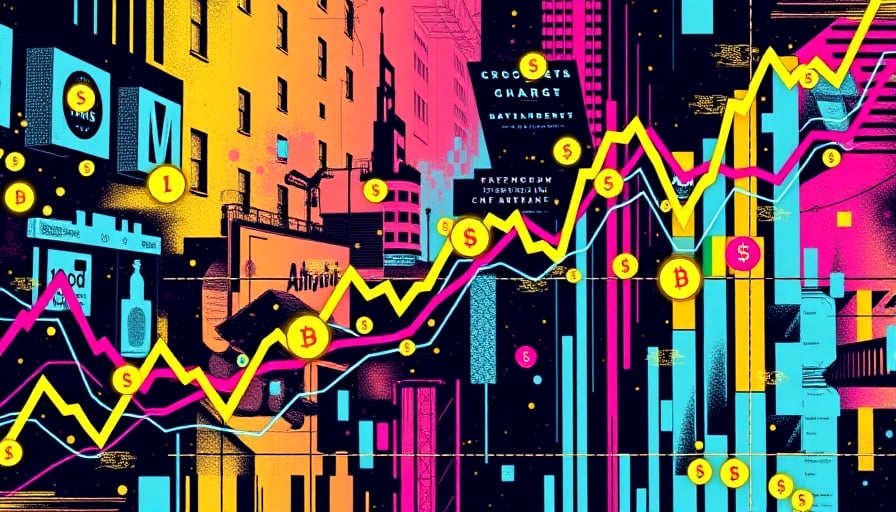Ping An Insurance Group Co. of China: A Masterclass in Risk‑Shielding and Governance
Ping An’s latest headline—providing liability insurance for the executives of Wan Chen Group—is not a mere PR stunt. It is a calculated affirmation that the firm’s risk‑management architecture is already a step ahead of the market’s expectations. In a year when the broader Dà‑Bà‑jiā (Greater Bay Area) listing scene is being scrutinised for governance gaps, Ping An’s engagement demonstrates that a truly integrated ecosystem can turn governance into a competitive moat.
1. The Wan Chen Transaction: A Defensive Play in the Age of Regulatory Tightening
Wan Chen Group’s board disclosed that it will spend ¥350,000 to secure ¥100 million of liability coverage for its directors and senior managers from Ping An Property Insurance. The move, approved by the fourth board meeting and slated for shareholders’ vote, reflects two realities that Ping An has mastered:
| Element | Ping An’s Role | Implication |
|---|---|---|
| Underwriter | China Ping An Property & Casualty, a subsidiary of the group | Demonstrates cross‑divisional synergy within the Ping An ecosystem |
| Coverage Size | ¥100 million | Adequate to cover high‑net‑worth directors, signalling confidence in the premium pricing model |
| Cost | ¥350,000 | Modest relative to the premium, evidencing efficient capital allocation |
While the amount seems modest, the symbolic weight is enormous: Ping An is positioning itself as the go‑to insurer for executive protection in China’s most heavily regulated industry. The transaction underscores a broader trend—insurers are expanding beyond product sales into corporate governance services, turning risk mitigation into a value‑add proposition.
2. Governance Index and Ping An’s Strategic Edge
The latest Dà‑Bà‑jiā governance report revealed that the region’s 803 listed companies maintain an average governance score of 65.17, slightly above the national average (64.94) but still trailing the Cháng‑zǐ region (65.18). Within the core cities, Shenzhen scores 65.19—the highest among the trio of Beijing, Shanghai, and Shenzhen—yet remains below Shanghai’s 65.22.
Ping An’s inclusion in this cohort is telling. Its ecosystem model—spanning insurance, healthcare, auto services, real‑estate, and Smart City solutions—creates a natural alignment between risk exposure and risk mitigation. This integrated approach likely inflates its governance score relative to peers that remain siloed. The company’s ability to channel capital from its insurance arm to fund technology and innovation initiatives further strengthens its risk‑adjusted returns, a feature that governance evaluators prize.
3. Financial Snapshot: Why Ping An Is a Magnet for Institutional Capital
| Metric | Value | Interpretation |
|---|---|---|
| Market Capitalisation | HKD 1,081,180,000,000 | One of the largest insurers in China, providing deep liquidity and resilience |
| Close Price (2025‑11‑13) | HKD 59.95 | Reflects investor confidence in the group’s earnings stability |
| 52‑Week Range | 39.6 – 61.15 | Moderate volatility, implying robust earnings generation |
| P/E Ratio | 2.43 | Highly attractive valuation for a defensive asset in an environment of tightening monetary policy |
The P/E of 2.43 is a rare find in today’s high‑yield chase. It signals that Ping An’s earnings are both stable and expected to grow—qualities that resonate with value‑orientated investors, especially in the wake of the banking sector’s recent rally where high‑dividend banks outperformed the market.
4. Ping An in the Context of Macro‑Policy
The People’s Bank of China’s 2025 third‑quarter policy report stresses the continuation of a moderately loose monetary stance. As banks gain liquidity, capital‑heavy insurers such as Ping An are well‑placed to absorb increased underwriting activity. Their diversified product portfolio—property, casualty, and life—means they can tap into both consumer and corporate demand, a dual advantage that banks alone cannot replicate.
5. Critical Takeaway
Ping An is not merely an insurer; it is a corporate risk‑management engine. By underwriting executive liability for a peer in the same ecosystem, it re‑asserts its commitment to governance excellence—exactly the attribute that the Dà‑Bà‑jiā report highlights as a differentiator. With a low P/E, a high market cap, and a governance index that rivals the best in the region, Ping An is positioned to leverage macro‑policy easing while simultaneously tightening its own risk buffers.
For investors, the message is clear: Ping An’s integrated model delivers defensive stability, attractive valuation, and a governance framework that outpaces the broader market. In a world where corporate risk is becoming the new currency, Ping An is already playing the long game—turning insurance into a strategic, governance‑driven asset.




